Here's Seattle City Councilmember Tim Burgess's sanguine take on the prospect of deep-bore tunnel cost overruns. Writing on his personal blog, he says:
On the cost overruns challenge the Mayor continues to raise I would just remind everyone that this is a state highway, a state designed and managed project, a state selected contractor, and a state paid-for project. […] The City of Seattle is not on the hook for any of the tunnel’s direct costs.
Mr. Burgess is not in the legislature, but surely he reads the blogs. In Olympia, as the Slog's Dominic Holden reports, they have a different perspective:
On January 14, state senator Jim Kastama (D-25) introduced a bill clarifying that contracts for the tunnel builders cannot be signed until the City of Seattle provides a funding mechanism to pay for cost overruns.
It may be that Burgess believes the state's contract with the tunnel contractors will place the liability for overruns on the contractors. But until that option is put into practice, overruns are Seattle's business, and it's odd to go public with "reminders" that are so misleading. I have emailed his office to see about clarification....
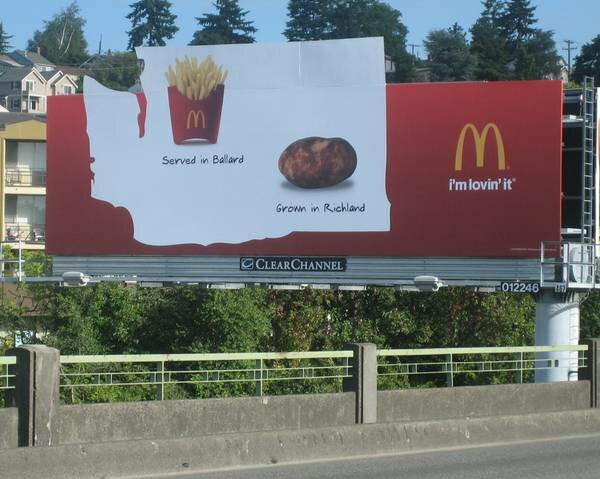 Photo courtesy of Gilman Park blog.
Photo courtesy of Gilman Park blog.
Coincidentally, I happen to be reading Mark Bittman's screed against agribusiness, junk food, and fast food, Food Matters, just as McDonald's "localwashing" ad campaign splashes across Seattle billboards. Gilman Park blog apparently broke the story on July 18, and it is now spreading across the internet. See Grist.com, Change.org, Fast Company, and Web Design Cool for various takes on the fast food giant's blatant and insulting attempt to hitch a ride on the locavore wagon.
The irony of the campaign is that a marketplace such as Seattle, with strong farmers markets, restaurants committed to sourcing locally, and an educated, informed populace, is not likely to respond well. That doesn't really matter. McDonald's has a marketing budget of over a billion dollars, the bulk of which (over $800 million, as of 2006) is spent on U.S. media. That's about 16 percent of gross sales, paid for with every Big Mac, fries, and shake. Test marketing an ad campaign that will be about as successful as their pizza trial a few years ago is just a part of the equation.
What will be significant is the how much media attention the campaign gets, whether the campaign becomes a "teaching moment" for consumers in other markets, and whether other communities heed the warning: Localwashing appears to be the next frontier for advertising. It's certainly easier and cheaper than actually sourcing and using local, sustainable, and organic ingredients. Very, very low hanging fruit for McDonald's, in fact, since the company is the single largest purchaser of beef, pork, potatoes, and apples in the U.S....
Posted on behalf of Mike Gillis, Board member of Seattle Atheists. "Everybody Draw Mohammed Day" was an idea conceived by Seattle cartoonist Molly Norris who jokingly floated the idea in reaction to South Park's debacle with portraying Mohammed in an episode of the animated series.
I support "Everybody Draw Mohammed Day." Why? Because I support free speech. Even speech I don't like. Especially speech I don't like.
Just the same way I'd support "Everybody Eat a Hamburger Day," if it were Hindus using threats of violence against people who ate beef.
In a free society, free speech means having the right to say exactly what someone doesn't want to hear. If you don't like what someone has to say, you need to answer with your own free speech. Violence and the threat of it is not free speech. It is the admission that you have a losing argument in favor of your position. Nothing justifies violence to chill free speech, not one having their religious sensibilities offended. Nothing.
If some religious person drew an offensive cartoon or wrote an offensive op-ed about atheists, it would be insane and morally reprehensible for me to kill the person who wrote or drew it. It would be wrong for me to cut off their head, shoot them eight times and stab them through the heart. It would be wrong for me to set embassies on fire and beat people up.
It would be wrong for me to chant for their deaths and call upon other atheists to kill them for being offensive. It would be wrong for me to imply a death threat to the writer or cartoonist and then post pictures of the above beheaded murder victim on my website. It would be wrong for me to break into the writer or cartoonist's house with an axe and try to kill them in front of their grandchild. Ever. No matter how much I was offended. No matter how bad the cartoons or op-ed was....
Starbucks' Facebook fan page is the epicenter of Sonics fan protest this morning. It all starts rather innocently, with Starbucks announcing the "We love you Seattle" promotion. Every Friday through June 18, you can pick up a special gift at "local participating Seattle Starbucks."
A nice gesture, sure to engender smiles of gratitude from happy Seattleites, yes? Well, in the unlikely event that this blog post is optioned for a movie, the trailer might say: "But Starbucks forgot one thing..."
Sonics fans. Who have not forgotten that Starbucks CEO Howard Schultz' spearheaded the team's sale to Oklahoma Cityites, the overwhelming factor precipitating the team's desertion of Seattle. Sonics fans are not feeling the love. To put it lightly. And they aren't being shy about it.
"f*** starbucks an howard shultz, c***sucker!!" comments one Kyle Mortensen on SBUX Facebook.
Thomas Kohnstamm is a little more coherent: "Thanks for the offer of a free coffee, but I'd rather have the basketball team that I grew up on."
The directors of Sonicsgate have even chimed in with a link to their Webby-award winning film about the team's departure....
Bing's Streetside view captures the scaffolded look of The McGuire
Yesterday, the news broke that a 25-story high-rise in Belltown, The McGuire, would be torn down just nine years after construction, due to "defects." The $31-million apartment tower, at 210 Wall Street, had been clad in scaffolding for months, as the owners tried to deal with cracking and spalling of the concrete exterior, due to problems with reinforcement placement in the building’s frame.
Further investigation revealed that post-tensioned slabs--widely used in high-rises to help support and strengthen the concrete, and allow for thinner floors--contained cables that were corroding. (After it opened, The McGuire fairly quickly had troubles with water entering the building's envelope, and then the wrong paint and grout had been used to protect the cables from water, as well.) The City of Seattle Department of Planning and Development told the owners to repair it or vacate by the end of 2010.
Given the costs of repair, the Carpenters Union Local 131 and MEPT, the Multi-Employer Property Trust, gave hundreds of residents notice to vacate. (The McGuire's original developers were the Carpenters Union Local 131 and Harbor Properties.) Ronald Holden, Belltown's eyes and ears, reports on his blog Cornichon that residents are being offered substantial incentives to quit the building by May 15.
Legal advisers Kennedy Associates said the owners were suing the general contractor and architects. Emporis.com and the city's permits confirm that the general contractor on the project was the national firm McCarthy Building Companies, Inc., one of the top ten commercial builders in the U.S. Here is their differentiator:
Because we are true builders, owners get more and better options. Faster and safer execution. And a clear cost/benefit solution that yields the best final cost, every time.
Structural engineers were ABKJ, who also worked on Harbor Steps and Belltown's Arbor Place. Architecture firm Hewitt has a long list of Seattle projects, from Harbor Steps and Belltown's The Klee lofts and suites, to the Capitol Hill light rail station and University Village. Most recently, they are working on Belltown's Third & Cedar project, a 17-story tower with about 200 units, funded by HB Capital....
 Slightlynorth gives you...Belltown!
Slightlynorth gives you...Belltown!
(Follow-up post on the architects, structural engineers, and general contractor here.)
The McGuire apartment building, at 210 Wall Street in Belltown, opened its doors in 2001. Now, just nine years later, it's closing them for good. Though the marketing copy, ironically, boasts "exceptional attention to detail in design construction," the 25-story building, with 272 units, is suffering from "corrosion of post-tensioned cables and concrete material and reinforcement placement deficiencies," according to legal real estate advisers Kennedy Associates. (Their full press release, with full grout details, is after the jump.)
Since repair is financially infeasible, residents are being relocated (with larger incentives the sooner they leave), and the building will be dismantled. Everyone must go by the end of this year. This comes as a bit of a shock to residents of the upscale building, who are paying $1,000-$1,500 per month just for studios. But investigation of the defects revealed that conditions were becoming unsafe, and Seattle's Department of Planning and Development is requiring the building's owner to submit periodic inspection reports to track the building's health.
Carpenter’s Tower, LLC, is the named owner, a partnership of the Carpenters Union, Local 131, and MEPT, the Multi-Employer Property Trust. They're suing the general contractor and architects (not named in the news release). Since it's unlikely the general contractor built just one structure, I've got a call in to find out who it was.
In the heyday of building before the real estate market crashed, roughly from 2001 onward, just-add-water condos sprouted up quickly. Nine years was enough to do The McGuire in--that doesn't seem that long. But the Seattle Times just reported on Northgate's Thornton Place condominiums, and the settling problem that 20 of the 109 units are experiencing, just a year after project completion. Floors and walls have separated by half an inch so far....
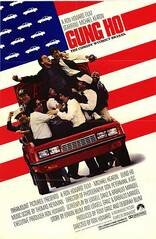 It's like a Bizarro-world "Gung Ho"!
It's like a Bizarro-world "Gung Ho"!
Over at the Harvard Business Review, blogger Dick Nolan (Boeing Philip M. Condit Professor of Business Administration at the UW's Foster School of Business) thinks Boeing's Trojan Horse moment was in outsourcing that famed Boeing know-how. Writes Nolan, "Before the 787, Boeing had retained almost total control of airplane design and provided suppliers precise engineering drawings for building parts (called 'build to print')."
Not that that has changed entirely--ironically enough, here's this recent headline from the Wall Street Journal: "Boeing takes control of plant." But that's a South Carolina plant. For the 787, Boeing has constructed 300-partner supply chain that spans the globe.
Continues Nolan:
Boeing effectively gave Tier 1 suppliers a large part of its proprietary manual, "How to Build a Commercial Airplane," a book that its aeronautical engineers have been writing over the last 50 years or so. Instead of "build to print," Boeing provided suppliers with performance specifications for parts and components and collaboratively worked with them in the design and manufacturing of major components such as the wing, fuselage section, and wing box.
The only problem is that once Boeing has trained and retooled its far-flung suppliers, it will have planted a worldwide crop of competitors. China, Nolan thinks, is the most likely to run with the commercial airplane ball. Airbus has already agreed to a Chinese final-assembly plant, work that it, like Boeing, has tried to keep "stateside."
So forget South Carolina: Asia's lower-paid workforce is learning from the best how to build a plane from nose to tail, and how to put it together and sell it for about fifteen percent less (per Nolan) than Airbus or Boeing. It's a fait accompli, a matter of when, not if.
 As much as I like to rail about government bureaucracy--come on, who doesn't?--I often see signs that our government is populated by hard-working, competent people. (Whoops, there go our eastern Washington readers.)
As much as I like to rail about government bureaucracy--come on, who doesn't?--I often see signs that our government is populated by hard-working, competent people. (Whoops, there go our eastern Washington readers.)
Yesterday I wondered aloud at the seeming discrepancy between a report that the state added 12,000 jobs in January, and another report that indicated our unemployment rate had either stayed the same or edged up imperceptibly.
Sheryl Hutchison, the state's Employment Security Department communications director, wrote in to explain, in refreshingly clear terms:
On the surface, it seems illogical that the unemployment rate could increase at the same time jobs are increasing. The answer lies in the definition of "labor force."
As the economy starts to improve and more jobs become available, discouraged workers will start looking for work again--thus increasing the total size of the work force. Since these individuals haven't found a job yet, it causes the unemployment rate to increase.
For several months now, our economists have been predicting this phenomenon would occur as the economy starts to pick up--and it appears that it's starting to happen. As illogical as it seems, it's actually a positive sign that the economy is starting to move again.
The question of whether an unemployment rate is what it says it is, if it doesn't count all the ready-to-work unemployed, aside, at least it makes sense. If and when the job market starts to get back to its feet, the news that people are hiring will draw thousands back to the labor force. The Seattle Times economy reporter Jon Talton vouches for this reading in his post today:...
(h/t to Belltownpeople)
The slogan for Belltown's Moda condominiums is "Fashionable living. With money left for life." There is not, apparently, money left to pay the subcontractors who installed the balconies.
Last Friday, Hideous Belltown was tipped off by a passer-by that men on a ladder were partially removing balconies from Moda. He inquired what they were up to, and they said they were owed $20,000 and were taking the balconies back.
Hideous Belltown's Keller took a walk by this week and it was true--the railings were gone from a number of balconies. The word is, the units of each are occupied, so there's a chance here for a particularly brave resident to--if he or she survives--to file a spectacular personal injury lawsuit.
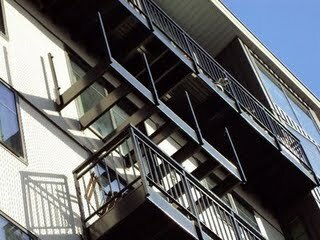 Photo courtesy of Hideous Belltown/Igor Keller
Photo courtesy of Hideous Belltown/Igor Keller
Moda, unsurprisingly, did not return Hideous Belltown's call for comment.
Perry Lorenzo, known to thousands as Seattle Opera's education director, died over the weekend, succumbing to lung cancer. He was 51.
Perry joined the Opera in 1992, after ten years at Burien's Kennedy High School. Very quickly, he transformed the education department: His standing-room-only preview lectures became a sold-out $5 ticket, and helped fund the beginnings of a Young Artists Program, which over the years has become one of the country's leading opera training programs.
His popularity as a lecturer on opera never waned, and he traveled far and wide to share his enthusiasm for the art form, to San Francisco and New York, and even to Bayreuth's Ring festival, as a representative of the world's other great Wagner town.
Now let me take a moment to remember Perry personally. We met in or around the B&O Café on Capitol Hill in 1991, through a fellow classmate of mine from Seattle University. (Perry often spoke and taught at Seattle U.) He was still teaching at Kennedy H.S. at the time, and when he learned I was working at Seattle U.'s writing center, he talked me into giving feedback on his AP students' papers.
"They think they are ready for college," he told me, "so let them know the bar will be higher." I tried to be diligent. After the first pass, he asked me, graciously, not to make his students cry. Occasionally they popped into the B&O to say hello to their favorite teacher, and he took great pleasure in introducing me as the person who wrote all those critical comments on their papers.
Perry arranged my first real editorial job out of college, vouching for me when a temporary position came open at the Opera, and I got a trial stint as managing editor of the Opera's magazine and programs. I ended up spending most of the 1990s at the Opera, and watched firsthand as Perry tirelessly voyaged first around Seattle, then the Puget Sound, then the state, always leaving new opera fans in his wake.
An immensely funny, intelligent, and sensitive man, in public he adopted a hortatory mood. Yes you can, he insisted to audiences restive with high art apprehension, not simply understand, but know the appeal of opera. A staunch Catholic, he loved the rituals and ceremony of opera as much, I think, as the art of it....
That's right, our brand spanking new light rail system will be hosting a half-off event this Sunday. Well, not half off ticket prices, more like half of people's clothes off. And, Sound Transit didn't plan it--the No Pants Light Rail Ride was conceived and organized by our own Emerald City Improv as an extension of the New York No Pants Subway Ride (see video). They've already had a few years of practice, but us Seattle folk are quick learners.
Now is your chance to get famous for taking your pants off, just like mom always wanted. It appears that everyone in the city is already aware of the event (850 people are signed up on Facebook and countless more have seen it on Yelp) and even major media will be in attendance. This timid SunBreak reporter plans on being there and will bring back pictures and/or video if at all possible. Actually, you may just want to skip those--there hasn't been sun here in years.
Seattle's experiment with not wearing pants on public transportation will occur sometime in the early afternoon. It will cost you a light rail ticket to experience the moment. More information is available here and here.
 Yesterday I was kvetching to SDOT about the absence of any bike racks at the Westlake entrance to the light rail tunnel--either outside or inside--and I was told that I'd be happy to hear about the bike racks planned for the Westlake Streetcar Plaza. (The Southlake blog was happy to hear about the Plaza, so there was precedent.)
Yesterday I was kvetching to SDOT about the absence of any bike racks at the Westlake entrance to the light rail tunnel--either outside or inside--and I was told that I'd be happy to hear about the bike racks planned for the Westlake Streetcar Plaza. (The Southlake blog was happy to hear about the Plaza, so there was precedent.)
Construction begins this January and is supposed to finish by April.
The new Plaza is on one hand designed to improve "connectivity" between the Monorail and the streetcar, and on the other, to make the intersection of 5th Avenue, Stewart, Westlake, and Olive Way less of a confusing invitation to collisions with other cars and pedestrians. The 1.3-mile-traveling streetcar is currently averaging a little over 1,300 riders per day, and as full capacity is 12,600 passengers, it could use a little connectivity.
The plan expands the existing McGraw Square (which is clearly a triangle) to take over Westlake where the streetcar's terminus is. (You can see where the nip-and-tuck that they're going to do on Westlake is here.) This is probably a good idea, streetcar or no--currently it feels like you have to cross the street three times to go a block in that area.
I can't tell you what it will cost; I've visited SDOT's Westlake Transportation Hub Strategy page and downloaded three different pdfs (there are "big tree" and "big raingarden" design concepts for the Plaza), but apparently there are no costs associated with this project that are worth mentioning. This lack of transparency from SDOT peeves the Seattle Times ("Streetcar cost overruns"), which has unearthed $4.3 million in unannounced costs associated with the streetcar line....
 From the Autism Speaks website
From the Autism Speaks website
Sallie Tisdale has an article in Harper's (subscribers only) this month about her autistic daughter. There's an element of forestalled explanation to it; yes, she said "daughter."
My daughter, Annie, still lives with us. She is twenty-six now and at the moment is sitting on the porch, looking out at the street. Soon she will come in and pace for a while, her head down. Later she will read the first few pages of a book—the same book, the same pages, that she read last week and the week before, and will read again tomorrow.
"Autistic son" delivers 175,000 results on Google. "Autistic daughter," just 31,000. People are not sure why more boys than girls are found to have autism. Epidemiologically, the ratio is supposed to be about 3.6 boys to one girl.
It's known that girls can learn to mask some of the effects of autism more easily than boys, so it's possible that they are under-diagnosed in general. Studies show that hallmarks like "language deficits, tantrums, and aggression are all less common in girls than boys in the general population." A British researcher raises the specter of a shadow population of "shy" girls who like to keep lists and count calories (even to anorexia).
Tisdale's story is a primer on autism's variability, and its effects on everyone who struggles with it, including caregivers. Tisdale recounts the lifelong challenge of it: the official optimism with which her daughter was handed off as she finished school, the time her daughter started hallucinating and had to be given antipsychotic medication. Writes Tisdale:
Long-term studies of people with autism are not reassuring. Autistic adults generally read poorly, have few math skills. Very few go to college, are employed, or lead independent lives. The majority say they have no friends....
(more)
 Ex-Green Beret Michael Yon has been making a good living as an independent war correspondent, blogging his way through Iraq and Afghanistan, for some years now. He's been in the New York Times and the Wall Street Journal, on CNN and FOX News.
Ex-Green Beret Michael Yon has been making a good living as an independent war correspondent, blogging his way through Iraq and Afghanistan, for some years now. He's been in the New York Times and the Wall Street Journal, on CNN and FOX News.
But when he refused to tell "border bullies" (customs officials? TSA?) at the SeaTac airport how much money he made, they handcuffed him. He was eventually "rescued" by Port of Seattle police. "No country has ever treated me so badly," he added in another Facebook update, and included Afghanistan and Singapore in that list.
Airport security is understandably tight at the moment, following the Christmas Day failure to prevent a bomber from boarding not one but two flights. But it's difficult to see what self-reported income would add to airport security. And I'm not aware of any rules stating that U.S. citizens have to declare their income before being readmitted to the country.
Hey, welcome to Seattle, Michael!
On Monday, I got a call from the bank that issued me a credit card six years ago. The woman on the other end of the line asked me to call back using the number on the back of the card for security purposes.
When I called back, I was directed to the fraud department, where the same woman who had just called me answered the phone.
“Hello,” said the woman on the line. “Have you made any purchases in Florida today?” I said I hadn’t used the card at all in months, not since I was in Florida last June while on vacation. The woman said several thousand dollars had been charged, and declined, at a Ross in Fort Myers.
It turns out that my card information was stolen from my card’s embedded radio-frequency signal, the technology that allows it to be swiped over scanner without inputting a code.
That’s right. My credit card information was stolen from my wallet while it was in my pocket.
If you have a credit card that was issued in the past year or two, pull it out and...
 For more than a decade, Seattle has prided itself on its robust economy and unmatched blend of innovative, successful companies. We’ve had it all. So it’s particularly hard to see a local, homemade Seattle company get whacked and weakened by punch after punch from its competitors.
For more than a decade, Seattle has prided itself on its robust economy and unmatched blend of innovative, successful companies. We’ve had it all. So it’s particularly hard to see a local, homemade Seattle company get whacked and weakened by punch after punch from its competitors.
Starbucks [SBUX] is having a rough recession. They’ve had to close hundreds of stores due to declining sales and have seen their market share shrunk by the likes of McDonald’s and Dunkin’ Donuts.
Today, they’ve taken another smack to the gut from the boys behind the Golden Arches. Starting in January, McDonald’s will be offering free Wi-Fi. What this means is that the company behind the guy in the clown outfit has out flanked Starbucks yet again and gone directly to consumers with something they want and, frankly, demand.
For years Starbucks has stubbornly stuck to the notion that people like their stores and products so much that they will pay for an Internet connection they can find for free at a local café down the street (or now at a fast food chain with much cheaper lattés). In all fairness, Starbucks does offer free Wi-Fi, but only to AT&T Internet subscribers, or if you have a Starbucks card--otherwise, you pay for your time.
This might have made sense four years ago when wireless Internet first made its move towards ubiquity. But the world has changed and customers demand access as a prerequisite for settling down with a hot cup of Joe.
Everyone else, it seems, has recognized that having people stay in your store and probably buy more than one drink, a donut, juice, or a Happy Meal is a very good thing. They probably realize that the income they generate from those incremental sales will pay for the cost the store incurs from an Internet connection.
The bitter irony, pun intended, is that Starbucks invented the concept of the coffee-house-as-office. They created the idea of a comfortable, cozy place to have an espresso and get a little something done. One could argue that the rapid rise of 3G phones is a direct response to people wanting tools that would allow them to be productive while sitting in someplace very much like Starbucks. ...
"Why," I wondered, "is a TV weather forecaster part of the Washington's Most Wanted team?" This seemed like a form of modern metaphysical poetry: heterogeneous ideas yoked together by violence.
I met Parella Lewis in a Starbucks before she was due in at Q13 offices, determined to get to the bottom of this, like a newshound in an ersatz Jonathan Lethem novel. She was dressed for the weather. Point: Lewis.
I had researched, of course. First question/broadside: "I see that you are from Louisiana. Yet you never mention Jimmy Buffett." Turns out Lewis was born in Mississippi, is "not a cajun," but does love crawfish, in boiled or etouffée formats. She came to crawfish late, in her 20s. Relevant? Too soon to tell. Her anti-Buffett stance (not loving Jimmy is anti-) makes sense: the man's a pirate, an outlaw.
Lewis was on a two-track media-and-mayhem course from early on. She began in radio, which accounts for that cadenced enunciation you hear, while in college. But her goal back then was police work, despite the fact that she's medium height and willowy. (Since Wayne Cody, everyone in Seattle TV is thinner than me.) She attended the police academy, graduated in '99, and went to work as a reserve officer on the Lafayette force, logging 30 hours per month as a crime-buster.
She talked her way into undercover work early, and soon reported to her parents (her father is a preacher) that she'd be working as "an undercover hooker." This turned out to require a "gun in your back pocket, and a wire on," as well as detailed knowledge of Louisiana's Napoleonic Code. There was an awkward moment when she was solicited by ex-high schoolmates who, fortunately for everyone involved, didn't recognize her.
Yet, in the meantime, an appearance on a local TV telethon catapulted her out of radio and into the local TV market. Would she trade in her police uniform for forecasting courses? She would. Leaving Louisiana, she moved to Little Rock and then Indianapolis, becoming well acquainted with tornado weather. (A nearby tornado brought a finish flag to the 2004 Indy 500 at lap 450.)
Seattle, across the country, far from family and friends, was not her ideal destination. Even our bad weather doesn't match up. In Louisiana, floods mean "bodies float away regularly," said Lewis--tombs and crypts keep the dead six feet in the air.
Here, the tricky part is not where the funnel will touch down, but the effects of micro-climates on whether it's raining when you look outside or partly sunny. Lewis, in about 30 seconds, gave me a mini-lecture on the interaction of ocean air with the effects of the Olympic and Cascade mountains. Automatically, her voice shifted into that incantatory weather-forecaster mode....
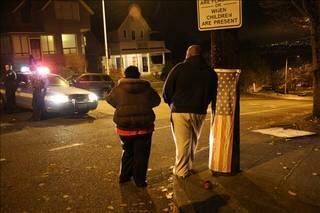 Two people watch from the western perimeter of the stand-off at 30th & Yesler. Photo: CHS
Two people watch from the western perimeter of the stand-off at 30th & Yesler. Photo: CHS
UPDATE: Maurice Clemmons was shot and killed in the Rainier Valley early Tuesday morning, December 1.
Sunday night around nine, SWAT rolled to Seattle's Leschi neighborhood on a tip that Maurice Clemmons was hiding in a house there. After negotiating with the house for several hours, sending in a search robot, and tear-gassing it, police entered themselves but Clemmons was gone. (Police say they have evidence he was there, and that he was shot by one of the slain Lakewood police officers.) Reports so far this morning have Clemmons appearing in the University District, and then Beacon Hill.
Overnight, the 37-year-old Maurice Clemmons was upgraded from a "person of interest" to suspect in the slayings of four Lakewood police officers on Sunday morning. The murderer appeared at the Forza coffee shop across the street from the McChord Air Force base, buying a coffee and displaying a handgun to baristas who turned and fled, and then turning on the four police officers there, killing all of them, despite their vests.
The story has grown sadly reminiscent of the Shannon Harps murder, as the suspect Clemmons has a long trail of felonies and mental instability in his wake, and should have been in prison. A decade ago, he was released from the remaining 47 years of a sentence in Arizona. Publicola has the plea for clemency that Clemmons submitted to Governor Huckabee, who then commuted his sentence. (Huckabee has released a statement.) Later parole violations were not prosecuted.
In Washington this past May, Clemmons was charged with assaulting police officers who were investigating reports that Clemmons was throwing rocks through his neighbors' windows. He was also out on bail after being charged with child rape.
Reading The Atlantic magazine's "Shots in the Dark" article, I paused at this sentence: "When Lisa Jackson, a physician and senior investigator with the Group Health Research Center, in Seattle, began wondering aloud to colleagues if maybe something was amiss with the estimate of the 50 percent mortality rate reduction for people who get flu vaccine, the response she got sounded more like doctrine than science." (Scientific denialism?)
Actually, I paused earlier, at "What if everything we think we know about fighting influenza is wrong?"
But let's back up a moment. Amid the novelty of H1N1 lies the more mundane annual death rate from seasonal flu. On average, estimates place the number of people the flu kills in the U.S. at 37,000. (The CDC penciled down 56,000 for influenza and pneumonia combined in 2006.) For context, about 37,000 people die in car accidents each year, and 30,000 are shot to death.
The problem is that the U.S. population is getting older, and one thing no one is arguing is that the flu kills...
 Bloomberg Businessweek has assembled one of those link-bait "Best Blank to Blank in the U.S." lists ("America's Best, Affordable Places to Raise Kids"), which are like...not crack, what's something more credible...um...like bacon cheeseburgers to us, so here you are. As it turns out, the kid-friendliest di tutti citta in the state may be, for our local readers, a shocker.
Bloomberg Businessweek has assembled one of those link-bait "Best Blank to Blank in the U.S." lists ("America's Best, Affordable Places to Raise Kids"), which are like...not crack, what's something more credible...um...like bacon cheeseburgers to us, so here you are. As it turns out, the kid-friendliest di tutti citta in the state may be, for our local readers, a shocker.
The Best Place to Raise Your Kids in Washington state is...Pullman. Ready for the next jab? The runner-up is West Richland. Now, this may not be as remarkable a west-side shut-out as it appears, as to judge from the blurb, the key criteria were "bordering Idaho," "wheat fields," "geographic marvels," and "high WASL scores." Also, "Pullman is a seat of learning and home to Washington State University."
Obviously not every city can be home to WSU, and there's no arguing the wheat field gap with our eastern neighbors. Bloomberg didn't even mention the Giant Palouse earthworm, which we have absolutely no answer to, and which you have to know is like...oh god, not crack again...uh...well, it's like any giant weird creature to kids.
In all seriousness, Bloomberg says they wanted to focus on smaller towns and cities, and not large, urban areas. I suppose that's nice and Norman Rockwell, but really? It seems a substantial assumption that kids are better off getting run over by a wheat combine than the express bus to downtown. Have you ever looked at the kinds of accidents farm kids are prone to? It's gruesome, and nearly always involves losing an arm to a machine. Still, it's a gut-check to realize that Eastern Washington still came out in front on the following:...
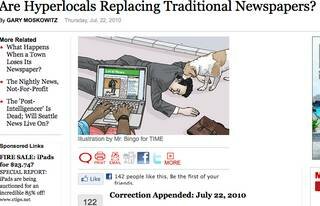 Every time I read a story like TIME's "Are Hyperlocals Replacing Traditional Newspapers?", my first reaction is generally a little thrill of recognition at seeing Tracy Record's name.
Every time I read a story like TIME's "Are Hyperlocals Replacing Traditional Newspapers?", my first reaction is generally a little thrill of recognition at seeing Tracy Record's name.
Seattle's hyperlocal scene (and social media mavenry for that matter) is the envy of the nation, and West Seattle Blog, as a more-than-full-time, news-breaking enterprise is the stuff of future HBR case studies. A six-figure revenue stream in the placeblog space? 750,000 page views per month?
But on the other hand--as Record would be the first to tell you--this is a dog bites man story. Listen to TIME characterize hyperlocal content: "Hyperlocal sites also frequently publish upbeat accounts of parades and high school sports, as well as information on which local vendors sell the best produce. Recent headlines on Record's site noted a 'mega-low' tide and an upcoming garden tour."
What does that sound like? TIME sums it up for you: "Record sits in her living room reinventing the role of an old-school newspaper editor." Reinventing may be stretching it: Record is swimming with the online current, rather than against it, but she's a journalist-editor in the mold of many newshounds who came before her.
 West Seattle Blog is a local newspaper that's not printed on newspaper, but otherwise, what's different is a question of degree, rather than kind. It's supported by local advertisers: insurance and real estate agents, yoga and massage practitioners, car repair shops and dog-walkers (thanks to "Sales Guy," co-publisher, and husband, Patrick Sand). Its online presence makes community-driven (and -supplied) stories that much easier, but news tips are not new. The WSB forum fills in for classifieds, and augments reader contributions.
West Seattle Blog is a local newspaper that's not printed on newspaper, but otherwise, what's different is a question of degree, rather than kind. It's supported by local advertisers: insurance and real estate agents, yoga and massage practitioners, car repair shops and dog-walkers (thanks to "Sales Guy," co-publisher, and husband, Patrick Sand). Its online presence makes community-driven (and -supplied) stories that much easier, but news tips are not new. The WSB forum fills in for classifieds, and augments reader contributions.
Record is fond of reminding people that a blog is just a delivery system. It would be a huge mistake to focus solely on the platform, and overlook the veteran, up-all-night journalist who knocks out stories on the hour. Coming from broadcast journalism, Record seems to have had zero fetishistic attachment to ink-smudged sheets; if there's media (video, audio, social) she hasn't leveraged in her quest to connect readers with WSB, please drop her a line, she'd love to hear about it....
 Maybe our "brazen squatters" in Magnolia and Kirkland are simply adopting best practices. Almost two years ago, in late September 2008, federal bank regulators seized Washington Mutual and sold it to JPMorgan Chase & Co. for $1.9 billion. All around Seattle the WaMu signs came down and Chase signs went up.
Maybe our "brazen squatters" in Magnolia and Kirkland are simply adopting best practices. Almost two years ago, in late September 2008, federal bank regulators seized Washington Mutual and sold it to JPMorgan Chase & Co. for $1.9 billion. All around Seattle the WaMu signs came down and Chase signs went up.
Now a WaMu shareholder, armed with a FOIA, claims to have a document showing the deal has yet to reach a final settlement. The PSBJ reports:
Lam noticed that on pages 7 and 9, the original WaMu purchase and sale agreement allows the FDIC to extend the settlement date. He says he asked about it, and the FDIC confirmed in phone calls and emails that the settlement date was set for Aug. 30, 2010, and could be extended further.
The PSBJ's Al Scott called the FDIC and JP Morgan Chase for comment, only to be told they were "looking into it." [Ed: I'll be downtown later this afternoon putting up TSB signage on Chase branches, since there's apparently some confusion about when Chase bought WaMu and when they knew they'd bought it. The market rewards nimbleness!]
At the time of the sale, WaMu had assets of $307 billion and deposits of $188 billion, so the $1.9 billion "sale" price represented a remarkable bargain for JP Morgan Chase, who took over WaMu's assets while WaMu shareholders' claims were wiped out by bankruptcy. Those shareholders have been waging a battle ever since, to reclaim at least part of their investment....
As of 10 a.m. on Saturday, December 19, there will be a SeaTac light rail station open for business. For $2.50 (one-way), you can ride the full line from the Westlake station downtown to the airport, and the Central Link segment will be complete.
It's only a three-minute jaunt from the Tukwila station, where the line used to end, to the airport station, but it cost $268 million. (The whole trip from downtown takes about 36 minutes, and trains run every 7.5 to 15 minutes, depending on the time of day.) Besides its ahead-of-schedule opening--which was originally set for December 31--the airport station has come in under budget.
The Port of Seattle handed me a fact sheet on a media preview walk-through this morning, noting proudly that the road improvements associated with the station construction cost $10 million less than budgeted in Port funds, and the pedestrian bridge and walkway came in at $1.4 million less. Altogether it's 950 feet from the platform to the first terminal skybridge, which everyone is sensitive about.
You can arrange free wheelchair service from Huntleigh (call in advance 206-433-5287), but otherwise you're hoofing it. There will be baggage carts, but nothing for you to ride on. (A people-mover was ruled out because of logistical considerations--it wouldn't really fit--and extra expense.) You won't notice the length so much on your way in; it's the return trip, when you've already hiked a few miles through airports, that the extra quarter-mile will wear on you. Still, for transit riders, a hike was already in order to get to the bus stop south of the terminal.
The Port's SeaTac employees, interestingly, may provide a good deal of the light rail regular ridership. Some 22,000 people commute to work at the airport each day, and it's hoped that some will take the new train, in addition to travelers. I'm checking with the Port on how it currently encourages its employees to take transit, and if there will be a special light rail push.
UPDATE: Perry Cooper, the Port's media officer, says via email:
We can’t predict how many employees will move to riding light rail, but we have several Commute Trip Reduction qualified employers, including the Port, Alaska Air Group, Delta and Host (who run many of our concessionaires). Another one of the largest employee groups that may take advantage of light rail are the employees of TSA, who have a significant number of employees that utilize public transportation.
For the Port’s Aviation division here at Sea-Tac, we have approximately 280 employees that hold a FlexPass, which is good on King County Metro, Pierce County Transit and Sound Transit including the Link Light Rail. We continue to promote that throughout Port employees.
I often think of Seattle as a small town, but maybe it's only in a city that I would not have known one of my neighbors on the next block was "freelance rocket scientist" Jordin Kare. He's been living on Capitol Hill since March 2003, though his first visit to Seattle was back in 1979.
Previously at Lawrence Livermore, he moved up from the Bay to consult on a commercial satellite project at Boeing. Now he's associated with Bellevue's Intellectual Ventures, though it's his side project, LaserMotive, that brought him to my attention.
A weary but suddenly richer version of Kare greeted me at the Victrola last week to discuss LaserMotive's $900,000 win at the Space Elevator Games, held November 2 to 6, 2009.
"So, what can I do for you?" Kare asked. He's unprepossessing at first glance, clad for Seattle's cold and rain, unruly gray hair longer on the sides and back, and slightly reserved. After the interview he was off to catch a late show of 2012 with his wife, with whom I had a quick discussion about Joss Whedon's Buffy, Firefly, and Dollhouse. (She's still angry at Whedon for the way he killed off "Wash"--really, a shock for all of us Fireflyers.)
This is just proof that you can't tell by looking at someone that he's devoted his professional life to laser propulsion; Kare has been a leader in his field pretty much since he got into it as a post-grad in 1986. It is the power-beaming aspect of space elevators that got him into the Games. As it happens, it's a great, high profile way to demonstrate that you can beam power over a kilometer's distance in a challenging setting.
LaserMotive was founded, essentially, as a part-time enterprise that would have one product, or goal: to create a laser-powered climber that would win the Space Elevator Games power beaming competition. First prize, for a climber that could travel one kilometer vertically at speeds of five meters per second or more, was $2 million, provided by NASA.
LaserMotive's climber set a world record, doing the kilometer twice at an average speed of four meters per second (topping out at 4.13 m/s), which netted them $900,00. "Hopefully we'll pick up the spare next time we go back down there," said Kare, cheerful at the prospect of holding another huge novelty check, this one for $1.1 million.
This is not precisely the space elevator you've seen on NOVA, with carbon nanotubes. For the competition, pilot Doug Uttecht's helicopter hauled aloft a 3/16-inch steel cable, 4300 feet long, that weighed about 300 pounds. (The people with this niche expertise are Northwest Helicopters, who also flew the cables in for the Tacoma Narrows Bridge.)...
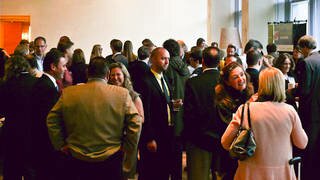 In his introductory remarks at last week's Sustainable Industries Economic Forum, Mayor McGinn seemed to forget the word of the day was optimism, asking the audience had they all read Jared Diamond's Collapse.
In his introductory remarks at last week's Sustainable Industries Economic Forum, Mayor McGinn seemed to forget the word of the day was optimism, asking the audience had they all read Jared Diamond's Collapse.
McGinn referenced the "Who cut down the last tree?" question that is always asked about Easter Island--summing up hindsight's incredulity at completely using up a renewable resource.
As to how that happens, "we're getting a clue right now," he added, complaining that we set environmental and sustainability goals, and then ignore them when it comes to large transportation projects.
To be fair, McGinn was also preparing for a city budget address that called for laying off over 200 city employees, so some gloominess was perhaps inevitable. (In a later Q&A, David Williams, CEO of ShoreBank Pacific, noted that the economy was "still deteriorating" and that he expected it to take five to seven years for it to pull out of its slump.)
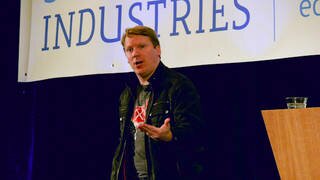 Cameron Sinclair, Architecture for Humanity
Cameron Sinclair, Architecture for Humanity
Then Cameron Sinclair--co-founder and "eternal optimist" at Architecture for Humanity--gave a keynote was supposed to be the antidote to any wet-blanketry, but if so, it came in the form of a tough-love caplet. Sinclair, now in his late 30s, is a "socially conscious architect" who won a TED prize in 2006 for his work, and used the prize money to fund what he calls "open source architecture," where people can share their ideas about camel-back clinics, among other things....
Hello!
Twitter: @thesunbreak | Facebook
iPhone app download (Free!)
Subscribe to The SunBreak
Delivery Options
![]() Subscribe to all SunBreak Stories
Subscribe to all SunBreak Stories
Daily Email Digest of The SunBreak
Most Viewed Stories
Recently in Our Flickr Photo Pool
www.flickr.com
|
Our Facebook Fan Page
Neighborhood Blog News
Niche Blog News
Seattle Weather
Get the SunBreak iPhone App

Download the SunBreak iPhone app for free.
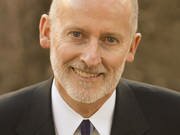






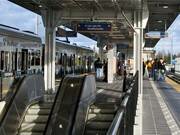
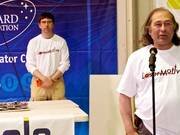
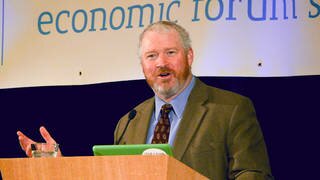



Most Recent Comments